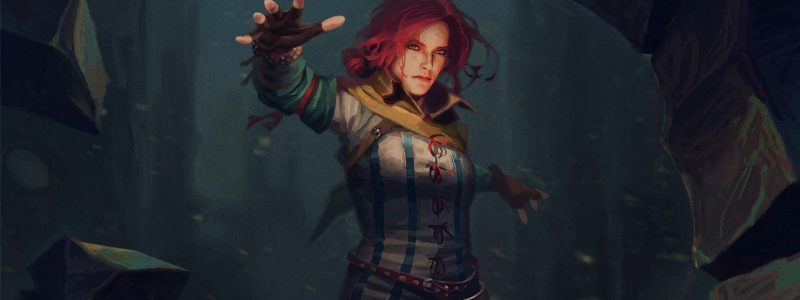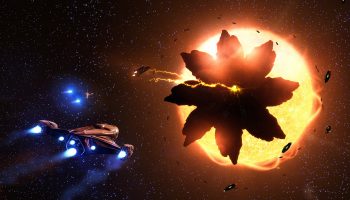Yesterday, we've looked at some monsters that aren't in the game yet, today we'll pick up where we left off. Enough of the introduction, lets get into it.
Gigascorpion (Gigaskorpion) – not much to talk about, it's just a giant scorpion (classified as an insectoid) that lives in the deserts in places like Ofir and Zerrikania. It attacks both with its sting and claws, both of which are poisonous. Noone can parry a hit made with its claws. It's venom is one of the strongest toxins known to men and it has a special card in Skellige. The monster is also depicted on Caravan Guard's card art, but the monster itself doesn't have its own card.
Arachnomorph (Arachnomorf) – an insectoid that resembles a giant spider. It attacks with its mandible and can produce webs that it uses to immobilise their prey. When Geralt killed an Idr at the beginning of "Season of the Storms" ("Sezon Burz"), he wasn't sure what it was, so he told the person who hired him, Albert Smulka that it's an arachnomorph.
Alghoul (Alghul), Graveir and Cementaur (Cmentar) – bigger and stronger versions of the ghoul (ghul). Out of the three, only Graveir is mention by the books, when Vesemir teaches Ciri the theory of monsters. He tells her that Graveir is much larger and stronger than the regular ghoul, and it can be recognized by the three bony combs on the head. Everything else is the same as in other necrophages (trupojady) – short and blunt nails for digging the graves, strong jaws able to crush bones and thin, long tongue for sucking the medulla, which Graveirs consider a delicacy (especially when it;s well rotten). All necrophages are the relict of the Conjunction of Spheres (Koniunkcja Sfer) period without an ecological niche, killing them doesn't destroy balance in nature. When figthing them, one must be careful about being infected with dead man's venom (jad trupi), which witchers can cure with Oriole potion (Wilga).
Devourer (Zjadarka) – a type of necrophage, often called Night Hags (Nocne Wiedźmy), because they resemble old, ugly women with long tongues. Folks of the North believe they live in houses standing on a chicken leg, which comes from the slavic tales about Baba Jaga. Its name derives from its unrestrained hunger. They are pretty smart compared to other necrophages and often attack in groups of 3 or 4.
Mula – a type of intelligent vampire, immune to sunlight, most often looking like a tall, slim woman, which makes people and even witchers sometimes mistake them for bruxas or alps. They are relatively gentle with their victims compared to ekkimas, for example.
Basilisk (Bazyliszek) – large flying reptiles, looking similar to Cockatrice (Kuroliszek) (which, unlike Basilisks are ornitosaurs/orinitoreptyle). It derives from a Polish legend (in which the Basilisk can turn you into stone if you look into its eyes and is defeated by using a mirror). Unlike in legends, the Basilisk in the witcher universe can't turn you into stone and you can't defeat it with a mirror (Geralt jokes about it saying that a mirror can defeat any monster if you hit it in the head hard enough), but their venom is the strongest of neurotoxins that kills within seconds. When Ciri explores Gors Velen with Fabio Sachs in "Time of Contempt" ("Czas Pogardy"), she encounters a fraud that tells people he caught a basilisk. He says that basilisks are born from an egg laid by a rooster that mates with another rooster and hatched by 101 snakes, which, obviously, is an utter nonsense. The monster turns out to be a young wyvern, which breaks out from its cage. Ciri kills the wyvern, but doesn't take credit for it in order to not get into any more trouble (that wyvern is the first monster she kills).
Source: https://www.reddit.com/r/gwent/comments/njb6t1/monsters_that_deserve_cards_2_weekend_lore/







